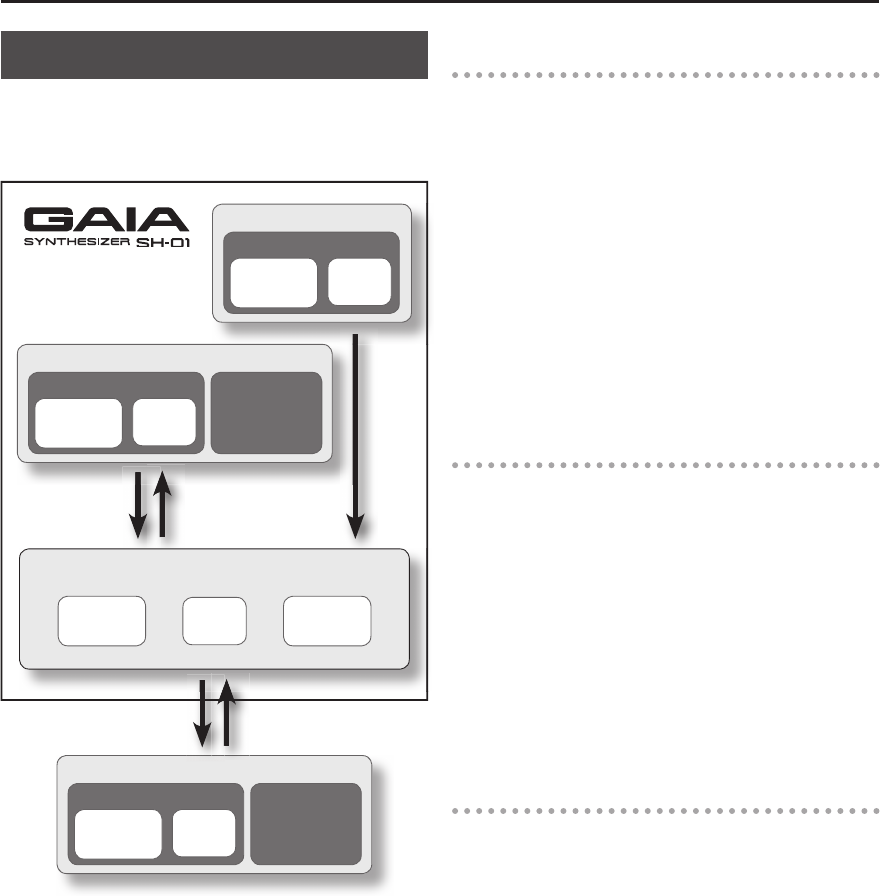
17
About Memory
Memory provides storage locations where patches (p.
18) and other settings are stored. There are three types of
memory: “temporary memory,” “rewritable memory,” and
“non-rewritable memory.”
Rewritable memory (USB memory)
User memory System
memory
8
phrases
64
patches
Non-rewritable memory
Preset memory
64
arpeggios
64
patches
Rewritable memory (Internal memory)
User memory System
memory
8
phrases
64
patches
Temporary memory (Temporary area)
Phrase
Patch
Arpeggio
Temporary memory
Temporary area
Data for the patch you select via the front panel buttons is
called up to this area.
When you play the keyboard or play back the phrase
recorder, sounds are produced according to the settings
that are in the temporary area. When you edit a patch,
the changes you make do not directly modify the data in
memory; rather, the data is read into the temporary area,
then modi ed.
The settings in the temporary area will be lost when you
turn o the power or call up other settings. If you want to
keep the data that’s in the temporary area, you must store
it into rewritable memory.
Rewritable memory
System memory
System memory contains system parameter settings that
specify how the GAIA SH-01 is to operate.
User memory
Patches and phrases can be stored in user memory.
USB memory (p. 55)
Patches and phrases can be stored in USB memory in the
same way as in user memory.
Non-rewritable memory
Preset memory
The data in preset memory cannot be rewritten.
If you’ve edited data that was recalled from preset
memory, you can store it in rewritable memory (user
memory or USB memory).


















